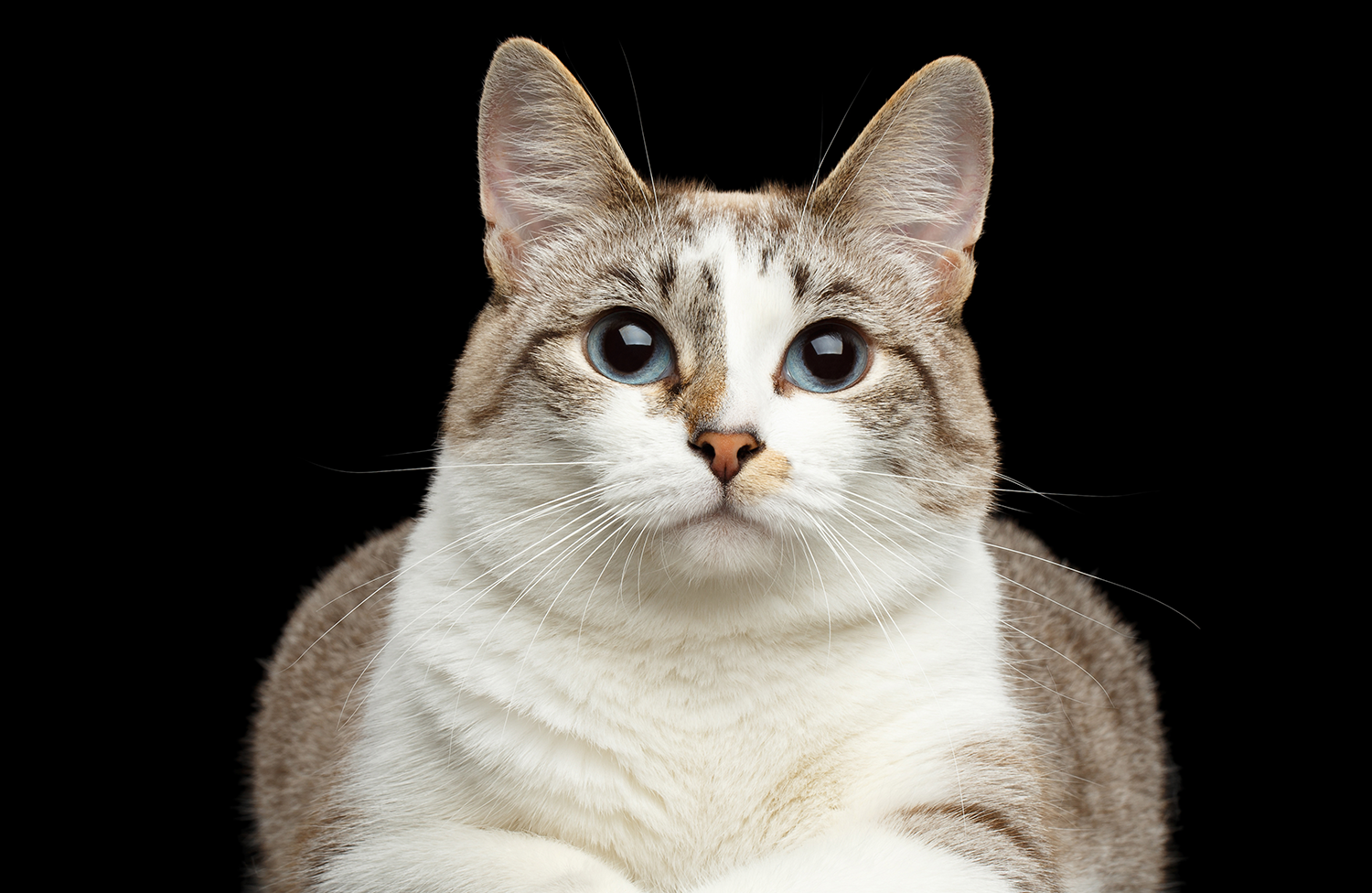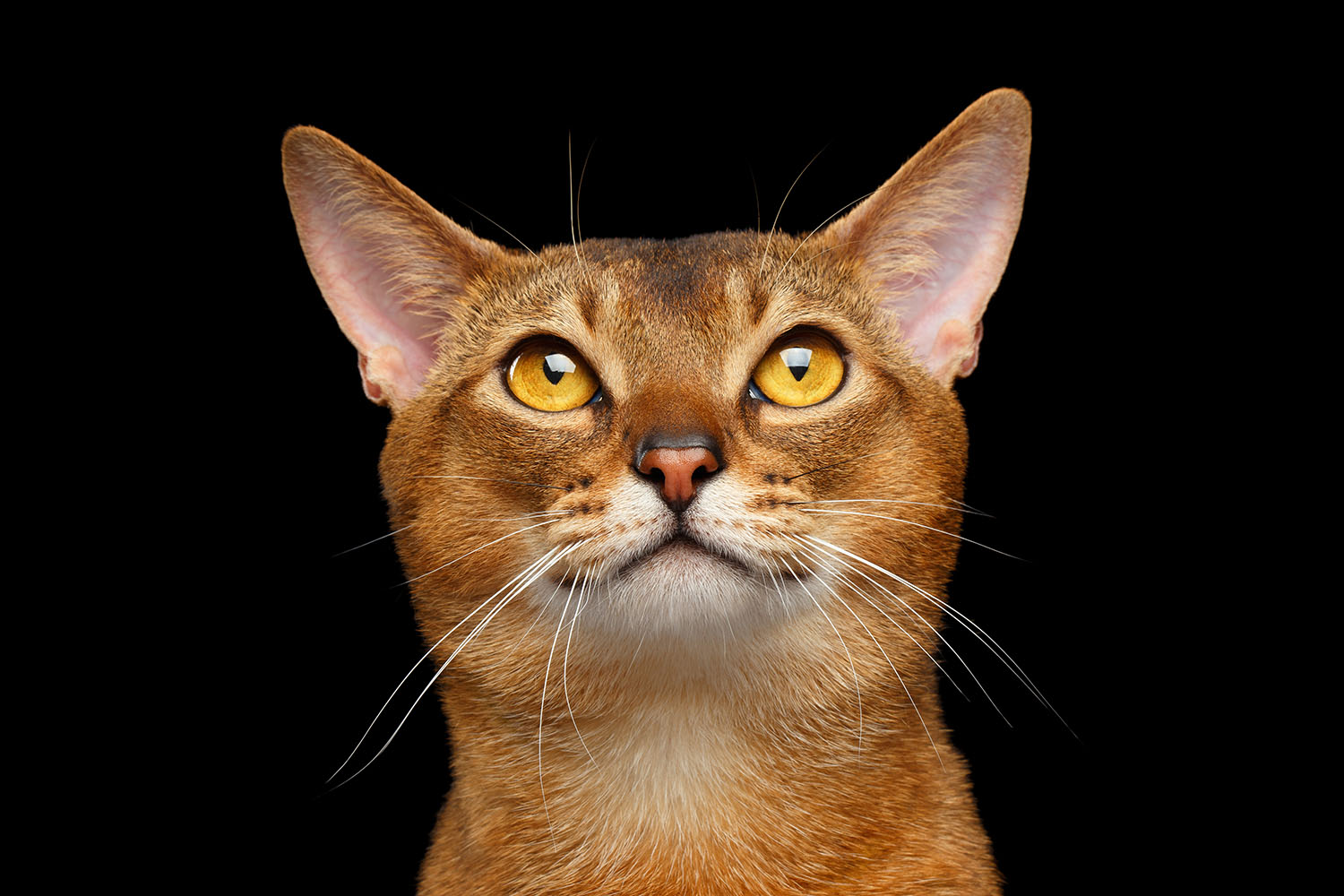Diabetes in cats
Looking at the stats, up to 33,000 cats in Australia are diabetic (that's around one in every 100)
You'd have to be living under a rock not to have heard about the diabetes epidemic in people (one person in Australia develops diabetes every 5 minutes). Many people have diabetes for months or even years before they are diagnosed. Now the situation isn't quite that bad in cats, but it's still common and it can go undetected unless you know what to look for.
So let's take a closer look at diabetes in cats.
What is diabetes?
Diabetes mellitus (DM) is a complex metabolic condition with the hallmark feature of high blood sugar. Brace yourself, we're going to go a bit sciency here.
We all have some sugar in our blood. It comes from two main sources:
- carbohydrates in the food we eat
- conversion of non-carbohydrates by the liver (a process called gluconeogenesis)
The amount of sugar in the blood is usually pretty tightly controlled (between 4–8 mmol/L). This control is achieved by the action of several hormones, the main one being insulin. Very simply, when blood sugar rises, insulin is released (by the pancreas) and acts to move sugar from the blood into cells (where is it used for energy immediately or stored as an energy source for later – as glycogen or fat). When blood sugar goes down, other hormones such as glucagon and cortisol increase and stimulate the liver to make some more sugar and release it into the blood.
Diabetes (high blood sugar) is due to either:
- a lack of insulin – the pancreas stops making it due to immune-mediate destruction of insulin-producing cells (this is referred to as type I diabetes in people and is the sort dogs get)
- insulin resistance – where there is enough insulin but the tissues stop responding to it (this is type II diabetes in people), eventually this can lead to insulin deficiency as the pancreas becomes dysfunctional and struggles to continue to make insulin (this is the sort cats get)
Without working insulin, the sugar in the blood can't get into the cells. The cells don't get enough energy and send out 'I'm starving' signals, which results in one of the signs of diabetes – increased hunger. The body also tries to feed the cells by increasing gluconeogenesis in the liver, causing breakdown of body protein and fat, resulting in another sign of diabetes – weight loss. But no matter how much food is eaten, the sugar still can't get into the cells so the body switches to an alternative energy source called ketones (also from the breakdown of fat). High levels of sugar and ketones in the blood is a life-threatening condition called ketoacidosis. (NB: ketosis and ketoacidosis are different things)
At a certain level of blood sugar, the kidneys stop keeping it and allow sugar to go out in the urine. When this happens, the sugar in the urine draws extra water out with it, causing a loss of body water and increased urine production. Hence, the other two main signs of diabetes – increased urination and increased thirst (to make up for the water loss).
In people, the excess sugar in the blood has a negative impact on numerous tissues, particularly blood vessels (large and small) and nerves. Over time, this results in things like blindness (diabetic retinopathy), cardiovascular disease, nerve damage (diabetic neuropathy). Fortunately, cats don't tend to get these sorts of complications very often – but (unfortunately) that's probably just because they don't live as long as people.
What causes diabetes?
The real question is why do some cats develop the insulin resistance that causes their blood sugar to be high. Traditionally, the factors linked to insulin resistance include:
- obesity
- other hormone conditions (eg acromegaly, hyperadrenocorticism)
- drug treatments (eg corticosteroids, progestagens)
As the understanding of type II diabetes has improved in people, we know that although obesity and diabetes are related, one causing the other is no longer so clear cut. What's more likely is that the regular consumption of simple carbohydrates causes insulin to be produced in large amounts. As mentioned, insulin moves sugar from the blood to the cells for use or storage. So if you don't need the sugar you just ate right now, it will be stored... as fat. Those large amounts of insulin also swamp the tissues creating desensitisation (ie resistance).
So instead of obesity causing diabetes, they're both linked to high insulin production (called hyperinsulinaemia). And this is down to high carb diets. Which are bad in people who are omnivores (evolved to eat animals and plants) but worse in cats who are obligate carnivores (perfectly evolved to eat other animals).
Yes, fat cats are at higher risk of diabetes, but the fat is a symptom of excessive insulin... which is primarily due to diet.
Other factors besides diet increase the risk of diabetes. These include:
- genetics – Burmese cats are predisposed to diabetes
- age – diabetes generally affects cats over 7 years
- exercise – physical activity helps increase insulin sensitivity
- gender – male cats and neutered cats are at higher risk
Since the major cause of diabetes (high carb diet) is something we can easily change, there's a good chance that diabetes is as avoidable in cats as it is in people.
What are the symptoms of diabetes?
We've pretty much covered these while looking at what diabetes is. The key symptoms to look out for are:
- eating a lot (polyphagia)
- drinking a lot (polydipsia)
- peeing a lot (polyuria)
- weight loss
When diabetes first develops, these symptoms may be extremely subtle and your cat will seem well. As the disease progresses, the symptoms become more obvious but your cat will probably still seem well until ketoacidosis develops. Symptoms of ketoacidosis include:
- lethargy
- anorexia
- vomiting
- dehydration
- acetone breath (not everyone can smell this so don't rely on it)
It's really important to notice things before ketoacidosis, because it's much more complicated to treat (requires fairly intensive in hospital care) and despite treatment, some cats will still die.
How is diabetes diagnosed?
Diabetes is usually pretty straightforward to diagnose. In a cat with clinical signs, we look for:
- high blood sugar
- glucose (sugar) in the urine
Now there is a spanner than can get into the works of diagnostics. When cats get stressed, their blood sugar can go up (called stress hyperglycaemia). And a trip to the vet is a stressful event! In most cases, the sort of rise we see with stress is much lower than with diabetes. But sometimes stress hyperglycaemia can be high enough to make things confusing.
If we run into an unclear situation, we can retest a few hours later when the cat is more settled and the blood sugar has gone down. Or we can do a test called fructosamine. This test gives an indication of what the blood sugar has been over the past week or so (it's a bit like the HbA1c test in people).
When we're assessing a cat for diabetes, we tend not to just check blood sugar and urine glucose. This is because cats with diabetes frequently have concurrent diseases, such as pancreatitis and urinary tract infections. And we need to check for evidence of ketoacidosis.
When diabetes is suspected/diagnosed, we may recommend:
- haematology and biochemistry (blood testing)
- complete urinalysis (possibly with culture)
- thyroid testing (in older cats, as hyperthyroidism also causes increased eating and drinking with weight loss)
- abdominal ultrasound or pancreatic lipase testing for pancreatitis
How is diabetes treated?
(Major source of this information is ISFM Consensus Guidelines on the Practical Management of Diabetes Mellitus in Cats)
The main goals when treating diabetes are:
- reduce or resolve your cat's clinical signs using a treatment regimen that fits into your daily life
- avoid low blood sugar events (hypoglycaemia)
- prevent complications (eg diabetic ketoacidosis)
To achieve the first goal, we need to reduce the elevated blood sugar levels, typically through dietary modification and insulin therapy. Oral medications used by people with diabetes have been used in cats, but they don't tend to work well and come with lots of side effects.
diet
The first goal of dietary therapy is to halt the weight loss associated with diabetes. This entails feeding your cat ad lib or multiple times a day, preferably with some tasty wet food.
Ongoing, we want a food that's low in carbs (<3 g/100kcal). By reducing the carbohydrate content of the food, we reduce the need for insulin. This is good for insulin resistance because the way to make the tissues sensitive again is to let the insulin receptors have a break from all that insulin. It's also good when there is pancreatic dysfunction and the pancreas is struggling to make enough insulin.
There are some commercial diets made for diabetic cats, but it's hard to find one that's truly low enough in carbs. Wet foods tend to work better than dry.
There's not a lot of evidence around regarding when to feed, but for cats on a low carb diet, it appears that timing of meals doesn't have to match injections, and it may be okay for grazing cats to continue to graze. Unlike dogs and people, cats don't get much of a spike in blood sugar after eating.
If your cat has insulin resistance without much in the way of pancreatic dysfunction, it's possible that diet alone may work to control or even reverse diabetes. The problem is that it's hard to pick up 'early diabetes' in cats and we usually have some level of pancreatic dysfunction by the time of diagnosis. This means we typically need to help the pancreas out by providing some insulin.
Insulin therapy
Yes, that means injections. Unless you have a needle phobia, it will only take a couple of injections for you to get used to giving your cat insulin.
The aim of insulin isn't to get the blood sugar back to normal. We're aiming to:
- get the blood sugar below the level where sugar spills into the urine (ie <14 mmol/L) for as much of each 24 period as possible
- avoid low blood sugar (<4.5 mmol/L) at all times
The most common sort of insulin used is lantus (Glargine®). It's given twice daily and instead of mls, insulin is measured in units. The starting dose is low (0.25 – 0.5 units/kg), which means we're commonly prescribing amounts like 1 or 2 units per dose... tiny.
The standard protocol is you give the starting dose for 5–10 days then we look at adjusting the dose, depending on the blood sugar level at different times of the day. The blood sugar is usually highest (the peak) in the morning (before the first injection) then drops to its lowest (the nadir) around 6–8 hours later, it then rises again until the evening injection.
- If the lowest blood sugar is <4.5 mmol/L – we reduce the insulin dose by 50%
- if the range of blood sugar levels is between 4.5 and 14 mmol/L – we keep the dose the same
- if the peak is >14 mmol/L and the nadir is between 4.5 and 8.0 mmol/L – we either keep to the same dose and check again in 2 weeks, or we increase the dose by 0.5 units per cat
- if the peak is >14 mmol/L and the nadir is >8,0 mmol/L – we increase the dose by 0.5–1..0 units per cat
There are some people who like to do blood sugar checks at home. Glucometers are readily available from pharmacies (costing $40–100) and same strips people use are fine for cats. Instead of finger pricks, we use ear pricks to get a drop of blood. Don't worry if you're not into this – just monitoring symptoms is fine,
Once the blood sugar stabilises, we'll recommend a schedule for checkups (between every 1–6 months).
Diabetes FAQs
Is diabete curable?
It is possible to achieve what's called remission. By bringing blood sugar down, we can reset metabolic processes and tissue sensitivity, which allows your cat's body to manage blood sugar normally again (without needing insulin injections).
Because the signs of diabetes often recur after remission, we don't think talk so much about a cure. That said, it's only recently that we've really started focusing on low carb diets (traditionally, we've just gone low calorie). It will be interesting to see if we can retain remissions long term with better diets.
What are the signs of hypogylcaemia?
The signs of low blood sugar are:
* loss of appetite or increased hunger
* disorientation and confusion — may show an apparent inability to complete basic routine tasks
* weakness, low energy, loss of consciousness
* seizures (rare)
* anxiety, restlessness
* tremor/shivering
If your cat shows signs of hypoglycaemia and has the ability to eat, feed him a meal. If he is unable to eat, apply some honey or sugar syrup to his gums until he is alert enough to eat his normal food. Then, feed him a meal.
If your cat is unconscious, rub a teaspoon of honey or sugar syrup on his gums. If he regains consciousness, feed him and the bring him in for a checkup (he may need to stay for observation for a while. If he remains unconscious or starts seizuring, seek veterinary help immediately!
Don't give another dosage of insulin after any hypoglycemic episode until you have spoken to us.
The most common reason for hypoglycaemia we see is 'double dosing' of insulin, where more than one family member gives your cat the scheduled injection. Make sure everyone knows who is responsible for insulin injections and when.
What happens when I go away? Can I board my diabetic cat?
Most cat boarding facilities, including our cattery, will happily accommodate diabetic patients. There will usually be a small additional fee.
There are also house sitters that are experienced in doing injections (lots of vet nurses do pet minding!)
The diagnosis of diabetes can come as a shock. We get it. Not everyone wants to or is able to treat – that's okay. We're here to discuss all of the options.
We're also here if you need coaching when getting started with therapy... or at any point along the way.








